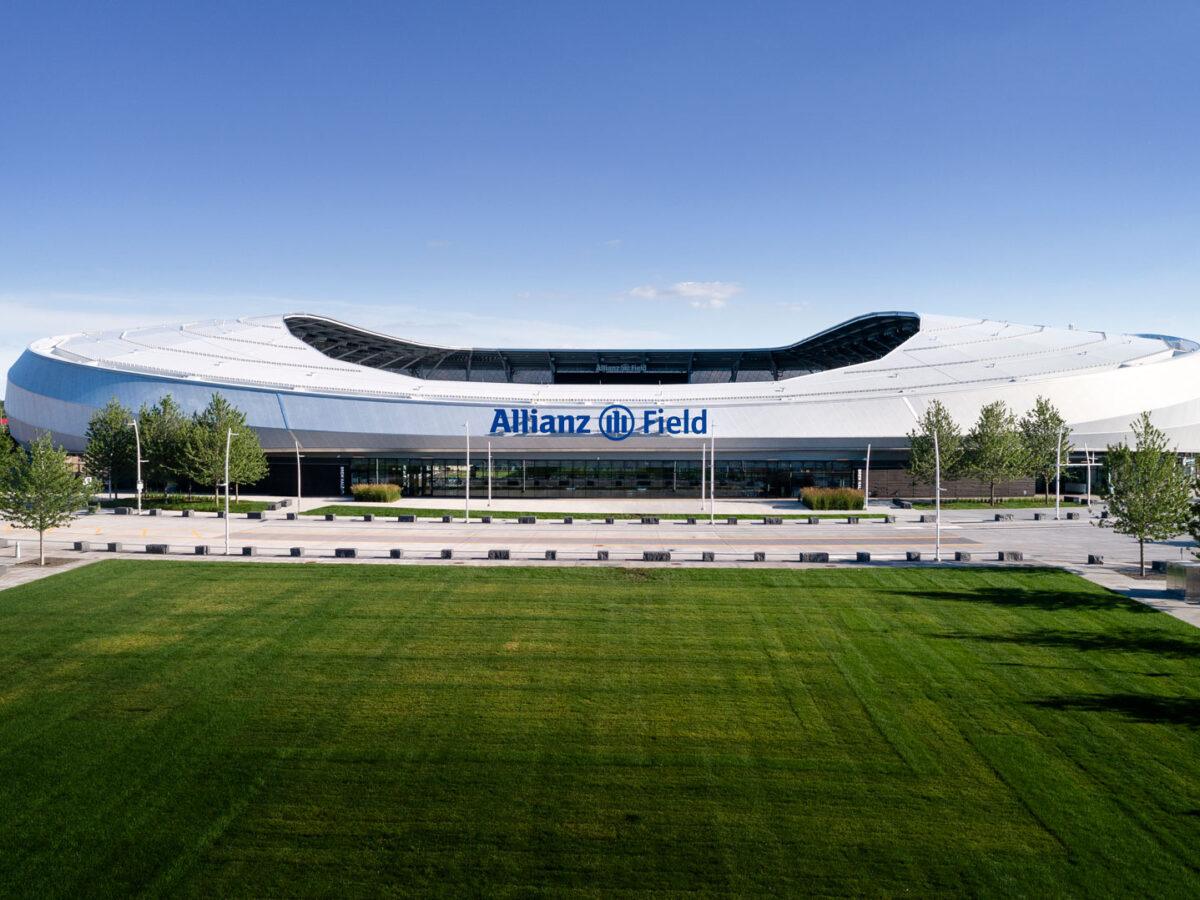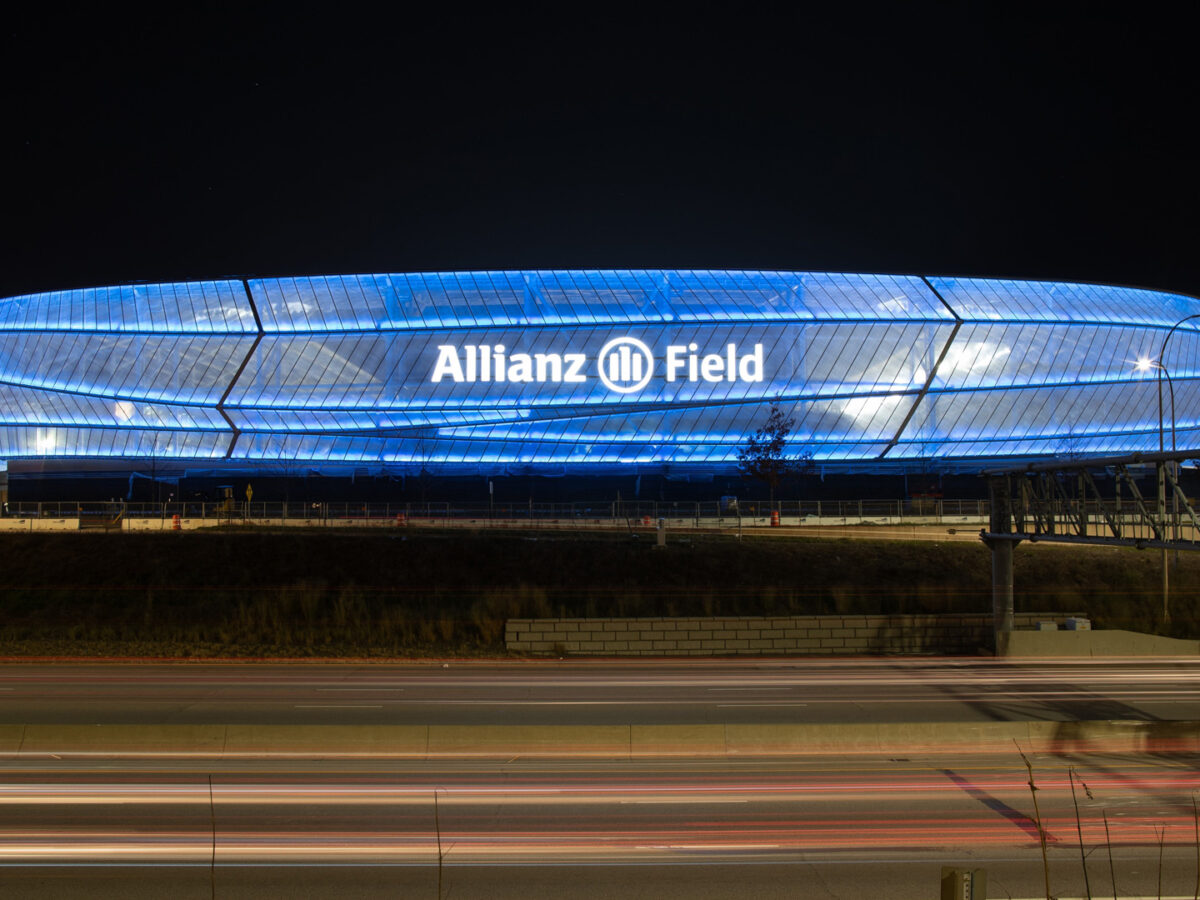April 4, 2019
How Allianz Field embodies Minnesota’s eco-friendliness

The home of Major League Soccer’s Minnesota United FC draws inspiration from the abundant lakes that dot the state. A sweeping exterior resembles water frozen in motion.
But North America’s latest and greatest soccer-specific stadium doesn’t simply mimic the beauty of Minnesota’s natural resources. It bakes environmentally-friendly features into numerous facets of its design.
Take the stadium’s water conservation efforts as an example. Rainwater that falls on paved areas funnels into underground tree trenches. The process nourishes plants while naturally filtering out contaminants in stormwater before it flows back into public pipes.
Hundreds of feet above, the stadium canopy collects and diverts rainwater to a reservoir underneath the Great Lawn, a 28,000-square-foot green space that unfolds to Allianz Field’s north. From there, an estimated 2 million gallons of water will be filtered and reused each year to irrigate a beautiful urban park full of maple trees and other native plants.
When it comes to being good stewards of the environment, Minnesota routinely ranks among the best in the United States. A 2018 study by WalletHub listed the state’s water and soil quality as second to none.
The latter measure of soil quality often goes overlooked with the creation of new venues likes Allianz Field. The redevelopment of this once-contaminated and vacant site not only injected new life into the Midway neighborhood it calls home, it also removed toxic substances from the earth. Residents can breathe easy knowing their community’s new gathering space brings new life to the site both above and below ground.
Shifting the focus from the site’s organic health to the structure itself, Allianz Field’s innovative exterior conserves resources in its own right. Made of lightweight woven fiberglass, the custom-designed skin can span longer distances between steel supports than traditional metal panels.
This one design feature conserved about 100 tons of steel. It not only kept costs low for the privately-funded project but more importantly reduced the building’s carbon footprint in terms of both the manufacturing and transportation of heavy steel supports.
The skin also serves a higher purpose with its bird-friendly qualities. Unlike typical architectural glass that creates a double hazard for birds by reflecting the daytime sky and appearing invisible at night, Allianz’s exterior is clearly visible to the hundreds of species of birds who share Minnesota’s skies.
We consulted with the Audubon Society and American Bird Conservancy to conduct a Bird-Safe Building calculation, with the building’s score of 11.97 falling well below the maximum of 45. At night, the 1,700 energy-efficient LED lights that give Allianz Field its glowing aura are tuned to not disrupt birds’ migratory patterns while still showcasing the building.
Whether it’s in the air, on the ground or below the surface, Allianz Field embodies Minnesota’s respect for the environment in ways big and small. Fans may not notice it come match day, but their new home protects the natural resources they cherish so much. It’s yet another example of our experience designing for Twin City authenticity.
Lorem ipsum dolor sit amet consectetur, adipisicing elit. Non facere corporis et expedita sit nam amet aut necessitatibus at dolore enim quis impedit eius libero, harum tempore laboriosam dolor cumque.
Lorem, ipsum dolor sit amet consectetur adipisicing elit. Illo temporibus vero veritatis eveniet, placeat dolorem sunt at provident tenetur omnis, dicta exercitationem. Expedita quod aspernatur molestias eum? Totam, incidunt quos.

